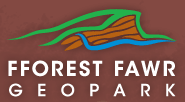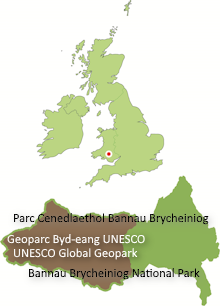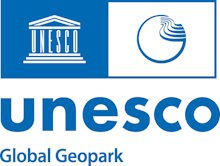The name of the Geopark might at first glance suggest that it was a wooded area. In fact its name derives from the upland block sandwiched between The Black Mountain in the west and the Brecon Beacons in the east and which has for centuries been known as Fforest Fawr.
Fforest Fawr or ‘the Great Forest of Brecknock’ was set aside as a Forest of the Lordship of Brecon in the late 11th century. In this context ‘forest’ means land set aside for hunting, and has no regard to the extent of tree cover. The area over which ‘forest law’ held sway was generally limited to the upland core of what is now the Geopark.
Scattered across the lower ground within the Geopark, there are innumerable small woodlands, generally of deciduous trees but occasionally intermixed with coniferous plantations. Many are to be found on the steeper slopes of valleys which have proved too steep to be put under the plough and often where soils are thinnest. Most of these woodlands today are of little commercial value but hugely significant for the contribution they make to the landscape.
Conifers
A number of larger blocks of conifer plantation have been established in the uplands, notably around Usk Reservoir and at Glasfynydd Forest, along the southern edges of the Geopark between Brynaman and Merthyr Tydfil and extending up the valleys of the Taf Fawr and the Taf Fechan.
Many were established by the Forestry Commission after its establishment in 1919 in the wake of the First World War with a mission to secure a national timber reserve. Those in the Taf valleys occupy the gathering grounds of the numerous reservoirs that cover their floors and continue to be owned by Welsh Water / Dwr Cymru.
Changing priorities mean that many forests are now managed primarily for recreation. They now provide walking, cycling and horseriding opportunities. Responsibility for those many forests owned or managed by the former Forestry Commission Wales was transferred to its successor, Natural Resources Wales, in April 2013.



